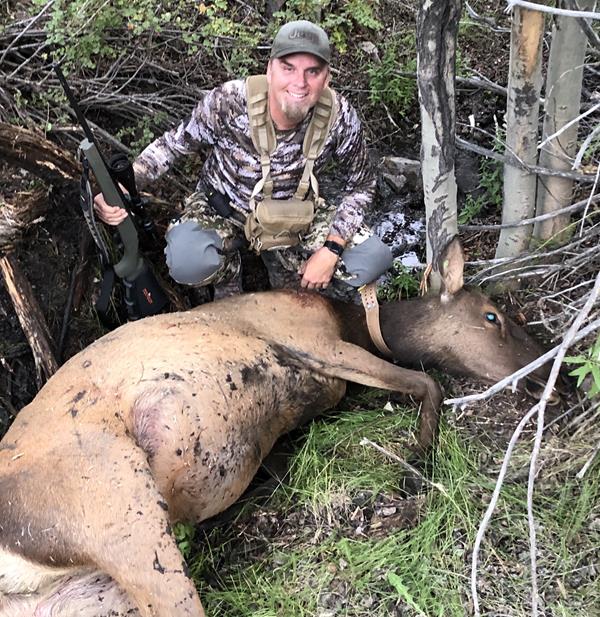
In 2019, my oldest son, Nate, drew a youth any bull tag in Utah. We’ve taken a few deer in California and one in Utah, but this was our first elk tag. We hunted hard for nine days in three different units all over the state and saw nothing but old sign, cattle, and one distant raghorn. On the last day, we got within 600 yards of intercepting some high-alert elk returning from a depredation run, but I misjudged their escape route.
After that disappointing strikeout, I decided to call Huntin’ Fool in 2020. I asked if they had something more “doable” than the previously described hunt in case I had to do it alone. Nate would be getting ready to go away to college and I wasn’t sure if he would have time to go. Huntin’ Fool set me up with a Hunt Advisor who told me about the Idaho A tag. It’s an early through late season antlerless depredation tag with an archery bull option. This sounded quite doable.
After I got my tag, I told Nate about it, and since opening day was August 1st, he would be available and agreed to go with me. As I scoured the IDFG website for information in preparation, I discovered that Nate could get the mentored youth tag for just $40! Now we each had a tag and our excitement level doubled.
We trekked 1,000 miles from Southern California to Idaho, parked the RV, unhitched the Jeep, and scouted that first evening and for the next two days. I was getting concerned. Most of the elk had not yet moved down from high elevation to begin their alfalfa raids. We talked with a few kind ranchers and helpful IDFG agents to learn that some pivots were being visited but only in the wee hours of dark-thirty.
Opening morning, some bulls, antelope, and whitetail were all getting their fill of alfalfa, but there were no cow elk. We had to come up with a new strategy for the evening hunt. I scoured my onXmaps to find a drainage close to pivots, yet providing the most immediate elevation gain to dark timber and sanctuary. I found a drainage that had a small, spring-fed, tree-lined stream connecting to ridges that quickly rose to 8,500 feet elevation. A treeless knob decorated with shale slides and sage rose up a daunting 700 feet above the stream and ran back and up to meet a finger ridge, which was just about one mile from the nearest oft-raided, uncut alfalfa pivot. The plan was to get a commanding view of the drainage, spot the elk as they emerged from the dark timber, and intercept them as they moved from elevation into the one-mile range.
It was 7:15 when we parked the Jeep at the end of the trail at the base of the knob. As we sidehilled above the tree- lined stream, I noticed a well-used cattle trail following a fence line on the far side of the stream, visible just over the treetops. I stopped, ranged the trail at about 200 yards, and checked the wind. It blew perfectly steady to our faces and down the drainage. A jagged rock outcropping about a hundred yards further that was well short of the peak and the mile-deep marker became our new goal. We put our shoulders to the grade and took a few steps forward when my peripheral vision picked up elk heads. On a small bench between the stream and the fence line, about a dozen antlerless elk stood relaxed, lazy, and unaware of our presence 200 yards above them. We dropped our packs and inched down on our bottoms behind some sage. We each settled on an elk, and I counted to three.
When the smoke cleared, two elk were down. We jumped up, hugged, and high-fived while striving to find the words to describe what had just transpired. When we turned our attention back toward our downed elk, we noticed only one. Mine was gone. I scanned each group of strangely calm, retreating elk for an injured animal. Nothing. We continued descending the steep shale slide toward the stream. We finally reached the bottom and came up toward the bench where Nate’s elk lay when we discovered mine had rolled from the cattle trail through a fence 25 yards down and through sage and saplings to rest right in the middle of the stream. Relieved, we took our pictures and began the daunting task before us. We finished mine by about 2 a.m., rested back at camp for four hours, and then returned to work on Nate’s elk at sunrise.
As we went to bed that night, our hearts overflowed with gratitude. I was thankful to God, my supportive wife, the helpful people at IDFG, our new friends from Boise, and Huntin’ Fool for helping both my son and me get our first elk.